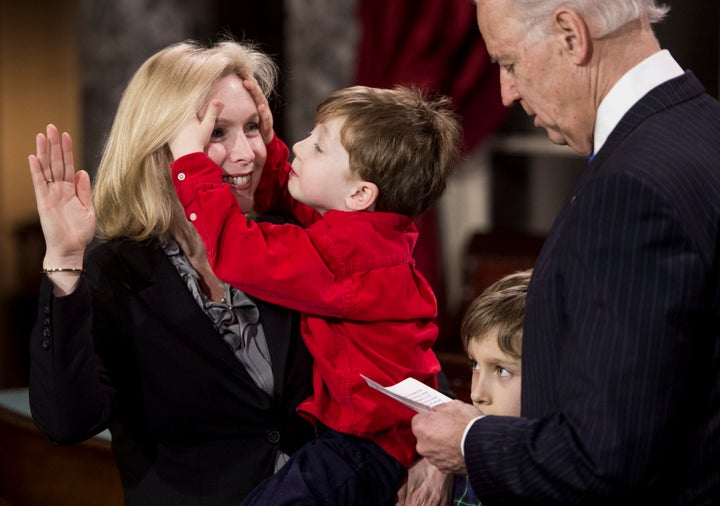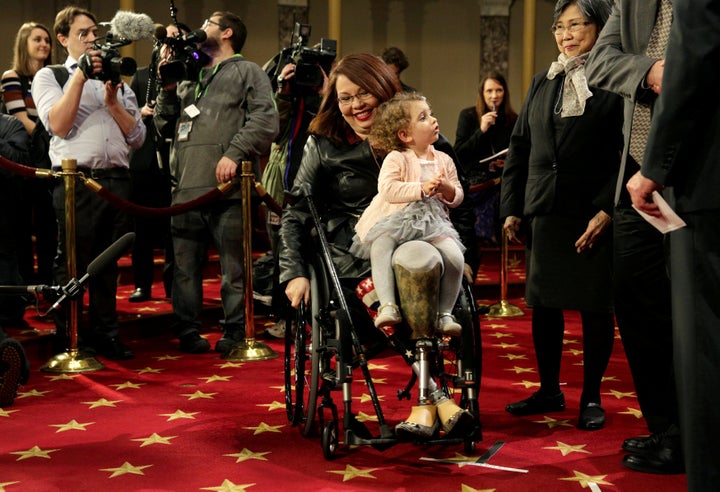
When I ran for the San Francisco Community College Board in 2014, I was pregnant with my first child.
After she was born, I was consumed with worry: How would I feed my baby during the rigorous campaign cycle? How would I feed myself? If I won, how I would I balance public service with parenting? These questions didn’t seem to cross the minds of the men I knew in public office, regardless of whether they had children.
Luckily, I found answers. I had wonderful proxies to speak on my behalf when I couldn’t be somewhere. I masked the sleep deprivation that comes with a newborn with policy points about higher education so the bags under my eyes looked more scholarly. I used my precious maternity leave to dial for dollars. I shamelessly brought the baby with me to fundraising events, because no one can say no to a cute baby (except venues like bars that don’t permit babies, of course).
Although most people were supportive, I certainly faced my share of sexism. There were some — mostly women — who felt I should be focusing my energies on motherhood and not on running for public office. And then there was the time I was told at an endorsement meeting I should smile more if I wanted people to vote for me.
When I served, I was one of approximately 114,000 women ― and an estimated half a million people total ― in elected office nationwide. This puts women at about 22 percent of all elected officials, a number that breaks down to about 19 percent of Congress, 23 percent of state executive offices and 25 percent of state legislative offices.
“When you’re on the campaign trail, your evenings are claimed by nightly events.”
There are currently no data available showing how many elected officials are mothers. Considering this lack of information, it’s no surprise that we aren’t meeting the needs of these women.
But we do see moms serving. Sometimes we even see them breastfeeding in their campaign commercials.
My experience taught me there is more we can do. Some solutions are practical, like providing child care at board meetings and holding campaign events in family-friendly places, or even places that allow children period. Some are more utopian, like getting money out of politics. All are ways to make sure that our representative government is just that: a government that represents all Americans.
Mothers of young children in particular are at a disadvantage. One big reason is the challenge of balancing work and family, and of securing child care. When you’re on the campaign trail, your evenings are claimed by nightly events. This is a real challenge for mothers, who usually end up with the responsibility of providing or arranging for child care.
For those already serving, child care can still be challenging. There can be 12-hour meetings and sessions that go late into the night. Although there is subsidized child care for congressional staffers, there is a yearslong waiting list. And state and local officeholders are typically on their own.
Although men are increasingly sharing in housework and child care, according to the Pew Research Center, mothers are still carrying a heavier load. Researchers have found that moms do more of the invisible mental work of families, such as scheduling doctors’ appointments, buying gifts for birthday parties and making sure schoolwork is done and backpacks and lunches are packed.
Mothers, especially those with young children, also face voter concerns about their ability to balance motherhood and public service ― even though mothers serve in office every day. This is why many women, like Rep. Nancy Pelosi, wait until their children are older or grown to do so. Despite lacking the head start of her male colleagues, Pelosi rose to become House speaker, breaking glass ceilings along the way.
But she is an exception to the rule. Too many women lose out on experience by waiting to run, and peak in positions with less seniority. This is similar to the business world.

Fundraising, too, has been shown to be a major barrier for women running for office. Effective fundraising requires two things women are less likely than men to have: an established network of donors and lots of free time.
One estimate shows federal lawmakers so far having spent more than 650,000 hours fundraising during the current Congress! The most effective way to reduce the outsize role of money in politics would be to reverse the Supreme Court’s Citizens United decision, which gave corporations ― and their money ― the right to “free speech.” Another solution would be to increase regulations around campaign financing, and offer more public money for those who want to run for office.
In addition to a stacked deck when it comes to fundraising, women face archaic and sexist stereotypes when they run. Women are still judged far more by their appearance than men are. Regardless of whether they’re mothers, women face a gendered double bind: Women without children are seen as ambitious and cold, while mothers like me are told to concentrate on our children. And regardless of parental status, women in power appear threatening — to both men and women.
If women didn’t have to face these often unconscious biases, perhaps more moms would feel free to run, and feel supported when they do. As Pelosi once said, “If you reduce the role of money in politics and increase the level of civility in debate, more women will run for office.” Hillary Clinton said, “The only way to get sexism out of politics is to get more women into politics.”
“Having a role model is not the same thing as having resources.”
Sen. Tammy Duckworth is one role model, as she is expected to become the first woman to give birth while in the Senate. Only 10 women have done so while in Congress, including Duckworth, who gave birth to her daughter while a member of the House. Overseas, New Zealand Prime Minister Jacinda Ardern is also expecting a child this year. Ardern will be the just one of a handful of heads of state to have given birth while in power in the last 200 years.
But having a role model is not the same thing as having resources. We need structural and cultural change if we’re going to get moms into politics and keep them there.
When moms do serve in public office, there’s plenty of data to suggest that we govern well. There’s a reason people often say — and why studies suggest — that moms are the most efficient people in a workplace. As Margaret Thatcher said, “If you want something said, ask a man; if you want something done, ask a woman.” And if you want a job done efficiently and effectively, ask a working mom.
Having more moms in office is beneficial to our society as a whole. We know that places with more women in leadership in general have higher levels of governmental effectiveness, and that our own Congress would be more effective with more women.
At the federal level, female members of Congress secure 9 percent more funding than their male counterparts and introduce twice as many bills. And when there are more women in Congress, support for bills related to so-called women’s issues increases ― although only about 1 in 50 of these bills actually makes it, proving that we need a lot more moms to push them through.
Despite the dearth of moms in elected office, an uprising is upon us. For more than a decade, several organizations have been training women to run for office. Then the 2016 election catapulted thousands of women into a campaign. Before then, Emily’s List, a progressive group that supports Democratic women running for office, reported that about 1,000 women annually contacted their organization for information about running. That number has since ballooned to 26,000. Many of these women are moms.
To keep this number high and rising, we need more resources and support systems for these women once they are in office.
I won my election and served on the Community College Board with two other moms. Together, we successfully pushed policies that were good for all students. We didn’t have child care available, but I was lucky: I had an incredible, equal partner as a spouse, who made sure that he could get home from work early so I could go to board meetings and political events.
But a good partner is not the same thing as good policies. Imagine how much more I could have done, and imagine how many more women could serve, with real support for moms in politics.
Dr. Amy Bacharach is an elected delegate to the California Democratic Party, a former trustee of the San Francisco Community College Board, and a mom to two tiny humans.
